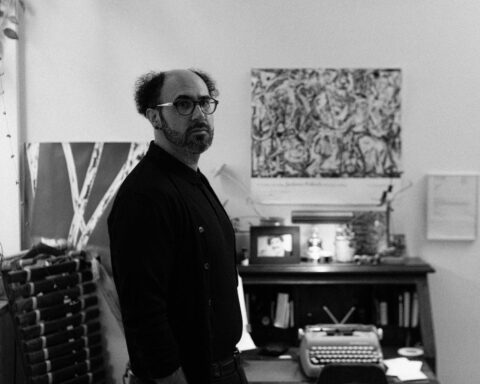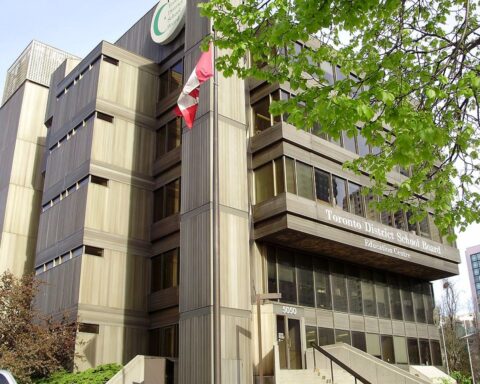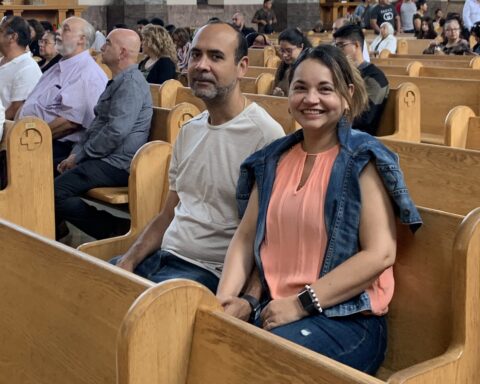With Multiculturalism Day (June 27) upon us, we have a good opportunity to reflect on how both government language and programming has changed under the Conservative government, and the legacy of Jason Kenney, the Minister for Multiculturalism.
Canada’s diversity continues to increase, given increased non-European immigration. Diversity varies regionally and municipally, with B.C. and Ontario the most diverse, the Atlantic provinces and cities the least.
Along with this increased diversity, Canadian multiculturalism has continued to evolve since the policy was announced in 1971. The policy and subsequent act had two main aspects: cultural and equity, both designed to further integration.
The following table captures the evolution from “celebrating differences”to the current emphasis on social cohesion. To respond to perceived faith and culture clashes, greater emphasis has been placed on shared values, and the original metaphor of the cultural mosaic has shifted to “conforming,”a contrast to the “harmony/jazz”of a more fluid approach to integration and accommodation (adapted from Media and Minorities: representing diversity in a Multicultural Canada, Thompson Education Publishing)
|
|
Ethnicity Multi (1970s) |
Equity Multi (1980s) |
Civic Multi (1990s) |
Integrative Multi (2000s) |
Social Cohesion (present) |
|
Focus |
Celebrating differences |
Managing diversity |
Constructive engagement |
Inclusive citizenship |
Social cohesion |
|
Reference Point |
Culture |
Structure |
Society building |
Canadian identity |
Canadian values |
|
Mandate |
Ethnicity |
Race relations |
Citizenship |
Integration |
Cohesion |
|
Magnitude |
Individual adjustment |
Accommodation |
Participation |
Rights and Responsibilities |
Responsibilities and Rights |
|
Problem Source |
Prejudice |
Systemic discrimination |
Exclusion |
Unequal access, “clash”of cultures |
Faith and culture clashes |
|
Solution |
Cultural sensitivity |
Employment equity |
Inclusiveness |
Dialogue/Mutual Understanding |
Shared values
|
|
Key Metaphor |
“Mosaic” |
“Level playing field” |
“Belonging” |
“Harmony/Jazz” |
“Conforming” |
But what are the main policy and program changes made by Minister Kenney since 2007?
Early on, he articulated his vision of multiculturalism, linked closely to citizenship, as follows:
But having criss-crossed this great country; having attended hundreds of events and talked to thousands of new Canadians, I am certain of this: we all want a multiculturalism that builds bridges, not walls, between communities.
We want a Canada where we can celebrate our different cultural traditions, but not at the expense of sharing common Canadian traditions.
We want a country where freedom of conscience is deeply respected, but where we also share basic political values, like a belief in human dignity, equality of opportunity, and the rule of law.
We don’t want a Canada that is a hotel, where people come and go with no abiding connection to our past or to one another, where citizenship means only access to a convenient passport. We want a Canada where we are citizens loyal first and finally to this country and her historically grounded values.
The key to building such a Canada, to maintaining our model of unity-in-diversity, is the successful integration of newcomers.
And that should be the focus of today’s multiculturalism.
Food and Folklore
Emphasis has shifted from cross-cultural understanding and inclusion to integration and social cohesion. Employment equity within government has been replaced by making government more responsive to the needs of Canada’s diverse population. Combating racism and discrimination and encouraging civic participation have been replaced by engaging in international discussions, largely focussed on anti-Semitism. Faith communities and related issues have became explicitly part of multiculturalism.
While Kenney “flirted”with replacing multiculturalism with “pluralism,”he soon recognized the long-standing “brand value”of multiculturalism and its place in the Charter. No changes were made to the Multiculturalism Act.
Government funding support through grants and contributions was reoriented to these new objectives in the new Inter-Action program. The mix of organizations changed accordingly. A new “events stream”was created to support “food and folklore”events that encouraged integration between communities.
Explicit linkages with citizenship have been introduced. The Discover Canada citizenship guide emphasizes common Canadian values, a more Conservative historical narrative, and integration rather than accommodation. Symbols that highlight Canadian historical connections to Britain, including the Crown, are highlighted.
The Government delivered on historical recognition for immigration and war-time internment for a number of communities (Chinese, Jewish, Italian, Sikh, and Ukrainian Canadians). These were incorporated into Discover Canada.
Black History and Asian Heritage Months continued, with more emphasis on Canadian history and military. The Paul Yuzyk Award (“the father of multiculturalism”)was created to recognize contributions to Canadian multiculturalism and integration of newcomers (as well as appropriating multiculturalism for the Conservatives).
The Canadian Race Relations Foundation broadened its programming to include inter-faith initiatives. The Government invested $30 million into the Global Centre for Pluralism of the Aga Khan based in Ottawa.
Existing federal and provincial multiculturalism networks were maintained.
Multiculturalism was shifted from Canadian Heritage to Citizenship and Immigration (CIC) in 2008 and folded into CIC’s organizational structure. Resources were reallocated to other functions in CIC. Given CIC’s “centre of gravity”of immigration and decreased emphasis, the program declined in activity and importance.
Ethnic outreach
At the same time, political outreach to ethnic communities increased. Kenney — “curry in a hurry” — was on the road three weekends out of four, with up to 20 events per weekend. The new “events stream”furthered his outreach. These efforts, according to the Canada Election Survey and related polling, played off particularly well with older, more well-established communities such as Italian, Greek, Portuguese, Jewish, Chinese and older South Asian communities.
Kenney remained Minister for Multiculturalism following the Cabinet shuffle of 2013 given the importance of the “fourth sister”in Canadian politics.
These changes took place in parallel with a greater focus on economic immigration, major refugee reform to reduce the number of refugee claimants, and recent changes to the Citizenship Act making citizenship “harder to get and easier to lose.”The latter makes a clear distinction between born and naturalized Canadians, as the latter (including those born dual nationals) are subject to an “intent to reside”test and revocation in cases of terror or treason.
So have these changes made a difference to the multicultural fabric of Canada?
First, all parties continue to actively court ethnic communities. The Conservatives, to their credit, have taken this to a new level. Unlike Europe or the U.S., we have no major political party opposed to immigration and multiculturalism. Multiculturalism is not a wedge issue. While there are significant differences, Canadian debate focusses more on specific policies rather than existential debates, Quebec excepted.
Secondly, while all political parties have closer relations with some communities, the Conservative government is more willing to “pick sides”than others. The shift in Canadian Mid-East policy is the most notable example.
Thirdly, the Government emphasized symbolic measures. Citizenship judges are diverse but will largely be limited to a ceremonial role under the new Citizenship Act. But, only three out of some 200 federal judicial appointments were non-white as are most senior Ministers.
Fourthly, broadening racism and discrimination to relations within and among communities is welcome, given that our largest cities are 25-50 percent visible minorities. However, the government’s almost exclusive focus on anti-Semitism has neglected challenges faced by visible minorities and Muslims.
Fifthly, these changes need to be seen in the context of a shift towards economic immigrants and tighter citizenship rules that will likely, over time, slowly drive down the current naturalization rate of 85 percent. This change will affect some communities more than others.
Given Canada’s increased diversity and human nature, there will always be accommodation and integration debates. Quebec will always stand a bit apart, given its preference for more “Cartesian clarity,” or hard and fixed rules, than the more ad hoc improvisation approach favoured elsewhere in Canada.
But it is a mark of success that, for the most part, a reasonable balance has been struck in most of our communities between integration and accommodation, and that all political parties embrace our diversity. The defeat of the Quebec Values Charter may also be taken as a sign that multiculturalism has become less of a wedge issue in Quebec.
Overall, under Kenney, the Canadian model of multiculturalism has returned to its roots by emphasizing integration, recognizing the diverse cultural identities of Canadians so that all Canadians, whatever their origins, could feel part of Canada. Equity considerations, however, have been downplayed.
As part of citizenship, Kenney has implemented a more explicit approach to shared identity and values. “Harmony/jazz”ad hoc improvisation has been replaced by “conforming,”to clearer expectations, correcting an imbalance that portrayed Canada as a clean slate or as a hotel without any sense of what was acceptable and what was not.
Andrew Griffith is the author of Policy Arrogance or Innocent Bias: Resetting Citizenship and Multiculturalism and is a regular media commentator and blogger (Multiculturalism Meanderings). He is the former Director General for Citizenship and Multiculturalism and has worked for a variety of government departments in Canada and abroad.
Andrew Griffith is the author of Multiculturalism in Canada: Evidence and Anecdote, Policy Arrogance or Innocent Bias: Resetting Citizenship and Multiculturalism and many other works. He is a former Director-General of Citizenship and Immigration Canada, Citizenship and Multiculturalism branch. He regularly comments on citizenship, multiculturalism and related issues, in this blog and the media.





